Exploring the role of ordinary Scots during the Cold War
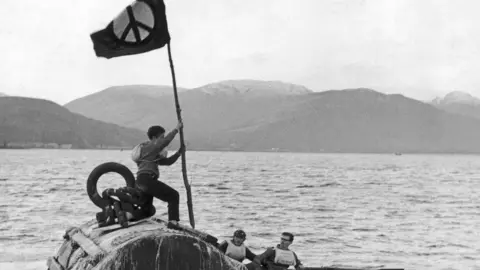 Trinity Mirrorpix Alamy
Trinity Mirrorpix Alamy"From 1961, when the US submarines arrived, Scotland became a legitimate target for nuclear attack," says Dr Meredith Greiling, the woman in charge of a new exhibition on the Cold War.
The decision to allow the Americans to base their Polaris submarines - and the nuclear missile system they carried - at Holy Loch near Dunoon put Scotland on the frontline of a stand-off between the world's great superpowers - the US and the Soviet Union.
The new exhibition at the National Museum of Scotland is looking at the role ordinary Scots played in the Cold War - the name given to the decades of deadlock that saw the US and the USSR constantly on the edge of nuclear Armageddon.
It explores the legacies which linger in Scottish politics, culture and memory.
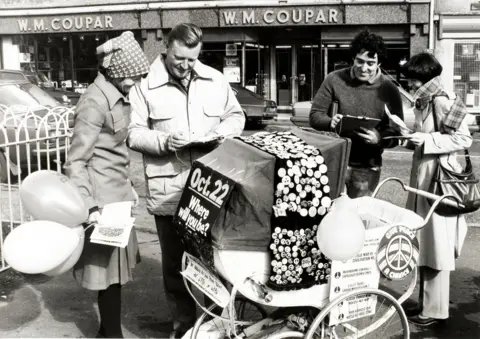 National Museums of Scotland
National Museums of Scotland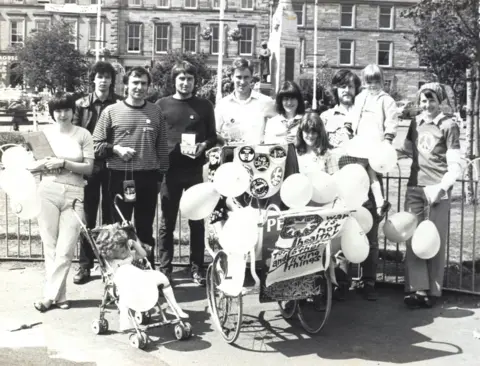 National Museum Scotland
National Museum ScotlandIn the wake of World War Two, the nuclear age presented the opportunity for jobs and cheap power generation but it also carried the looming threat of nuclear annihilation.
The standoff between the US and Soviet Russia resulted in the largest arms race in history, with both sides increasing their nuclear arsenals at an alarming rate.
During these years of geopolitical tension, Scotland played a key role.
"Scotland's geography made it strategically really important, especially when the US Navy brought the Polaris submarines, the 1960s Nato nuclear deterrent," Dr Greiling said.
Scotland was perfectly placed to detect Russian communications and submarines in the seas between the US and the USSR.
Military bases, some under US control, were set up across Scotland, including RAF Edzell.
This base was home to the US Army and part of its High Frequency Direction Finding (HFDF) Network, which was used to track targets worldwide.
One of the most controversial installations was the US Navy's ballistic missile submarine base at Holy Loch.
This base housed US nuclear submarines during the Cold War, allowing the US to patrol waters 1,500 miles from the USSR.
 National Museum of Scotland
National Museum of ScotlandKim Foden, from Kirkwall in Orkney, was one of the people who helped the museum with the exhibition - named Cold War Scotland.
She said: "I was brought up in a household where I was very aware of nuclear energy and power - and the destruction that could be caused by nuclear bombs."
When she left school in 1968, she worked for the Royal Observer Corps and was trained to carry out a very specific task in the event of nuclear weapons being launched.
If the alarm was raised, her job was to take specialist equipment to an underground outpost and establish communication with other sites around the country.
She was trained to take readings, such as radiation levels, and send them to scientists and other military personnel if nuclear bombs were ever dropped.
"Getting information could be the key to saving lives," she said.
 National Museum Scotland
National Museum Scotland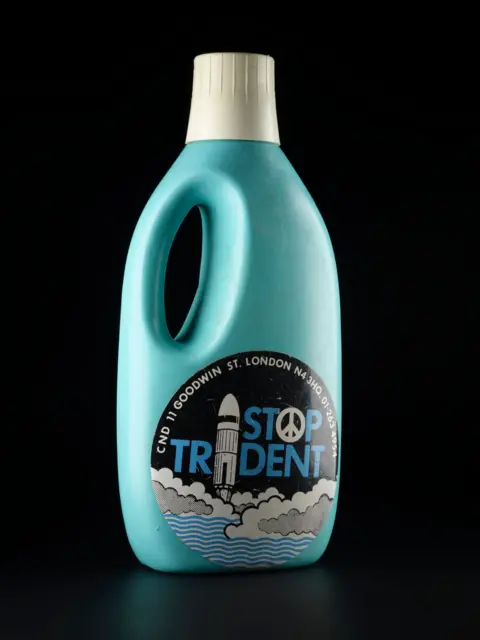 National Museums of Scotland
National Museums of ScotlandAnother major part of the exhibition is the stories of those who protested against the nuclear installations in Scotland.
Kristin Barrett was a dedicated advocate for nuclear disarmament for more than 60 years.
She started campaigning at the age of 17 while studying at the University of Aberdeen in 1960, joining protest marches on RAF Edzell and Aldermaston, the site of the UK government's atomic weapons programme.
The exhibition features photos of Ms Barrett including ones with her daughter's pram that she converted into a stall to distribute Campaign for Nuclear Disarmament (CND) leaflets and badges in her hometown of Blairgowrie.
In 1982, she took part in the Peace March Scotland from Inverness to Edinburgh.
During the march, she was given a protest rattle made from an old laundry detergent bottle, emblazoned with the CND logo, by a Church of Scotland minister. It is one of the items on display in the exhibition.
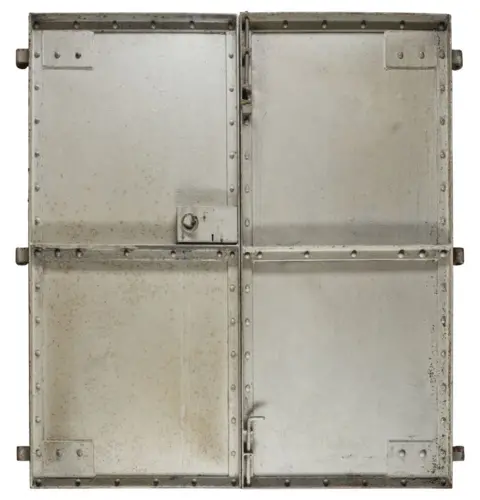 National Museums Scotland
National Museums Scotland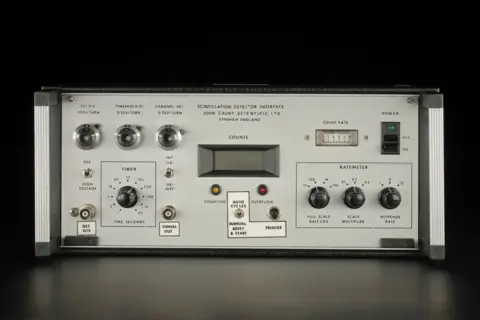 National Museum Scotland
National Museum ScotlandThe Cold War ended with the collapse of the Soviet Union in the early 1990s but in the previous four decades the prospect of nuclear war was a very real threat.
The exhibition also features items such as the steel blast doors of an Anti-Aircraft Operations Room (AAOR) in East Kilbride.
These underground bunkers formed a network established in the 1950s to protect high-value targets from potential aerial attack.
Other striking remnants on display include the control panel from the Hunterston Nuclear Power Station, built on the North Ayrshire coast and opened in 1964.
It was the largest nuclear power station of its kind in the world at the time and the first in Scotland dedicated to civilian use.
An earlier plant at Chapelcross, opened in 1959, was primarily used for generating weapons-grade plutonium for nuclear weapons.
Cold War Scotland will run until 26 January in the National Museum of Scotland at Edinburgh.
Admission will be free and include a programme of events such as tours and talks by curators and museum experts.
